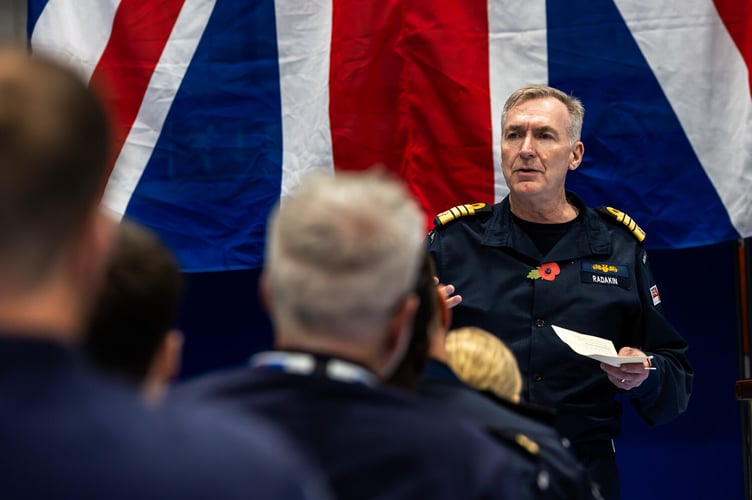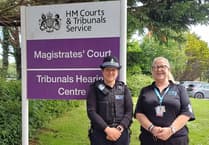THE head of the British Armed Forces spoke directly to sailors and civilians at Royal Naval Air Station Culdrose, telling them that their service on the frontline was essential for the defence of the UK.
Admiral Sir Tony Radakin, the chief of the defence staff, said the future of the Helston air station was secure and welcomed the first phase of a £100-million rebuild of the base, with new buildings and hangars and an Air Engineering School.
The former First Sea Lord visited RNAS Culdrose on Thursday, November 7 where he spoke to members of the anti-submarine warfare Merlin Helicopter Force as well as meeting sailors from 700X Naval Air Squadron to see the latest drone developments.
He said: “It is fantastic to come down here as the Chief of the Defence Staff. It must have been five years ago since I was last at Culdrose and what you are providing is phenomenal.”


Addressing a meeting of personnel from squadrons and departments across the air station, he said: “We’ve got a war in Europe and a war in the Middle East, and they are both escalating, and there are tensions in the Far East. That is the challenge for us. How do you do your job, with our allies, and keep the world as stable as possible at a time when the world is becoming more unstable?”
He said the answer was in NATO, the largest and most powerful military alliance in the world, and the UK’s ability to work side by side with its allies.
“It is you that provides the reassurance,” he added, during his talk in one of the station’s aircraft hangars. “You are the ones that keep us safe. Your ability to help track submarines, to work with our allies to make sure we maintain our freedom of manoeuvre in the north Atlantic and protect our submarines is essential for the protection of our nation.”
Admiral Radakin said he was pleased at the recent announcement of £100-million for new buildings, the first of a series of projects to rebuild the base over the next decade.


He added: “You are essential. Your future here is assured and what you really need to do is to get the most out of this base. You are the front line, particularly when I look at the anti-submarine warfare force. You are the front line of keeping our nation safe. That is what you’ve got to know.”
Admiral Radakin spent time talking to members of 700X Naval Air Squadron, including Royal Navy sailors and Royal Marine commandos who are now using remotely-piloted air systems in operations around the world.
He was shown some of the drones currently in use by the navy including Puma, Banshee and Peregrine and asked how they could be best used and what future systems were needed, given the swift changes in technology.
While praising the developments in the last five years, which he said were encouraging, he called for more training and a “change of mindset” to accelerate the use of drones across the navy and the Armed Forces.




.jpeg?width=209&height=140&crop=209:145,smart&quality=75)
Comments
This article has no comments yet. Be the first to leave a comment.